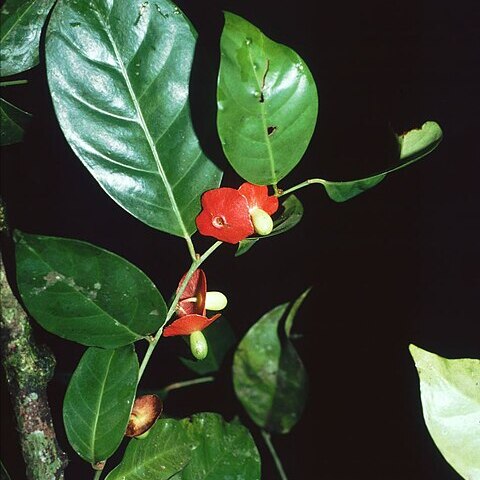Unarmed autotrophic shrubs or trees. Leaves alternate, oval, elliptic or oblanceolate, glabrous, with laticiferous ducts. Inflorescences in compact axillary fascicles, multi-flowered although only 1 or 2 per axil develop into mature fruit. Flowers bisexual, hypogynous, small. Calyx small, generally crateriform, free, 5-6 toothed or lobed, accrescent, becoming coriaceous. Petals 5-6, somewhat connate at the very base, glabrous or puberulent to villous within, valvate in bud. Stamens 10 or 12 in two whorls (in Panamanian species) or 5-6 in one whorl, the anthers globose, dehiscing longitudinally, the filament filiform or liguliform, antipetalous often somewhat shorter than the antisepalous. Ovary superior, conical, 3-merous to the middle, the ovules 3, pendulous, with 2 integuments, the style short to obsolete, the stigma 3-lobed. Fruiting calyx more or less reflexed, often brilliantly colored; drupe globose, oblate spheroid or ellipsoid; embryo embedded in the top of the endosperm, small.
Trees or shrubs; branchlets winged, glabrous. Leaves alternate, entire, coriaceous, glabrous. Flowers borne in axillary fascicles, (4–)5(–6)-merous, small, sessile or pedicellate. Calyx small in flower, lobed, subcoriaceous, accrescent and usually enveloping the fruit at maturity, sometimes reflexed. Petals valvate, ± free and pubescent on the inner surface. Stamens twice as many as petals, free or adnate to petal-base, usually arranged in 2 whorls, with the episepalous filaments or stamens as a whole slightly longer than the epipetalous whorl, or more rarely arranged in 1 whorl; filaments filiform or flattened; anthers ± globular. Ovary superior, 3-partite at the base and almost so to the apex; ovules 3, pendulous, anatropous; style short; stigma 3-lobed. Fruit a drupe, globose to ellipsoidal, glabrous.

